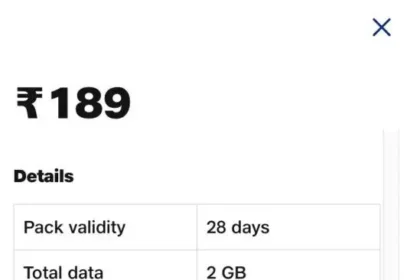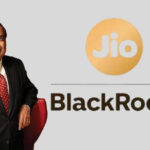Introduction
In a nation as big and diverse as India, good internet connectivity is not an indulgence — it’s a requirement. While cities have fiber-optic cables and 5G towers, more than 40% of rural India has only basic broadband to contend with. Mountains and forests, deserts, and distant islands tend to render traditional wired systems unworkable or not worth the cost. Jio SES is where satellite internet enters the picture — threatening to stream high-speed connectivity straight from space to even the remotest village.
Understanding the Players
India’s satellite internet contest isn’t just about speed — it’s about vision, scale, and timing. Let’s have a closer look at the two tech titans competing to reign supreme in Indian skies.

Starlink by SpaceX: The Global Disruptor
Founded by Elon Musk, Starlink is a subsidiary of SpaceX, the firm that pioneered space travel with reusable rockets. Starlink’s mission is ambitious and simple: provide high-speed, low-latency internet connectivity to all corners of the Earth, particularly areas where conventional broadband infrastructure cannot be installed or is too hard to do so.
- Worldwide Presence: To date, by 2025, more than 5,000 LEO satellites have been launched by Starlink, already offering internet services in more than 70 nations. Since its technology functions best in distant and remote locations — from the Australian outback to Alaska’s rural regions,
- India Aspirations: Starlink started looking at India as early as 2021 and even opened pre-orders from Indian consumers. However, it faced regulatory challenges when it started bookings without obtaining a license. The company has since then been in talks with the Department of Telecommunications (DoT) and is likely to return with a formal commercial plan. Starlink views India as an essential market owing to its huge rural base and increasing digital demand.
- What Distinguishes It: Its LEO constellation orbits much closer to the Earth (about 550 km), which significantly diminishes latency — making Starlink perfect for use cases such as video conferencing, online Gaming, and real-time cloud computing.
Types of Satellites: Various Orbits, Diverse Consequences
- Starlink – Low Earth Orbit (LEO):
- Starlink satellites are located in LEO, orbiting at a distance of about 500–600 km from Earth.
- It results in shorter signal distance, hence reduced latency (20–40 milliseconds) and quicker data transfer.
- Yet, LEO satellites have a smaller footprint to cover. Therefore, thousands of satellites are required to provide complete coverage of the globe — Starlink has already launched more than 5,000.
- Jio SES – GEO + MEO Hybrid:
- GEO (Geostationary Earth Orbit) satellites orbit at 35,786 km and keep pace with Earth, covering significant areas. Suitable for steady, wide-area coverage.
- MEO satellites such as SES’s O3b mPOWER work at around 8,000 km altitude — a compromise between lower latency and broader reach.
- This combined model enables Jio SES to provide both broad rural coverage and mid-latency (around 100 milliseconds).
Speed & Performance
In the internet, speed isn’t the only thing — but it certainly matters. Along with latency (how quickly data moves from point A to B) and bandwidth (how much data can travel simultaneously), these performance factors determine the practical usability of satellite internet in the real world. So, how do Starlink and Jio SES stack up?
Average Speeds & Bandwidth Capabilities
- Starlink
- Average Speed: 100–250 Mbps (some beta testers also see up to 300 Mbps).
- Bandwidth: For high-throughput, with upgrades in the pipeline driving towards 1 Gbps per user in the long term.
- Uplink Speed: 20–40 Mbps (adequate for video upload and HD calling).
- Scalability: With the increasing number of satellites going up each month, speed and availability are increasing incrementally, particularly in rural areas.
- Jio-SES
- Expected Speed: 100 Mbps+ (based on SES’s O3b mPOWER MEO network).
- Bandwidth: Scalable for enterprise-level throughput, with capacity tailored dynamically via software-defined satellites.
- Multicast Capabilities: Best suited to distribute content or training to thousands of places at a time, for example, schools or branch offices.
- 100–150 milliseconds, based on whether data is routed through MEO or GEO.
- Appropriate for streaming, distance learning, web browsing, and enterprise backhaul but not great for low-latency applications such as e-sports or telemedicine.
Coverage & Accessibility
India is not one country — it’s a mosaic of cities, deserts, forests, islands, and mountains. So, any satellite internet service provider will need to do more than deliver fast speeds — it will need to contend with terrain difficulties, infrastructure shortages, and harsh weather. Let’s observe how Starlink and Jio SES intend to step up to the challenge.
Connecting the Unconnectable
- Starlink’s Strategy: Global First, Rural Focus
- Starlink’s constellation in LEO is intended for direct-to-consumer connectivity, where users only require a dish and power to access the internet.
- In India, Starlink is targeting underserved rural communities, specifically where fiber and 4G/5G towers are impractical or uneconomical.
- With thousands of satellites broadcasting internet from space, it will attempt to build a global mesh network — with India as a high-priority market once regulatory obstacles are removed.
- Jio-SES’s Strategy: Local Integration at Scale
- Serving villages, tribal belts, disaster zones, schools, and government offices, Jio SES will adopt a hybrid GEO-MEO model.
- Building on Jio’s established 4G and fiber backbone, it can use satellite as a backhaul to distant towers — serving even unlit fiber nodes and rural base stations.
- Their hybrid method is best suited for fixed location users such as rural classrooms, panchayat offices, health centers, and border outposts.
Terrain Adaptability & Weather Resilience
Starlink & Jio-SES:
- Works well in open spaces such as rural plains and small towns.
- Signal can be weakened in dense rain, dense foliage, or lines of sight being blocked (hills, woods).
- Needs unobstructed view of the sky; not suited for tall city apartments or very dense forest without height.
- GEO satellites offer broad, blanket coverage — suited for hilly topography or islands where it is hard to position towers.
- MEO satellites find a middle path, performing better in cloudy or rainy weather than LEOs.
India doesn’t need a single solution; it requires access stacking. But if this is about who can go broader and deeper quicker, Jio SES is a home sweet home.
Affordability & Pricing Strategy
For satellite internet to be a success in India — particularly in rural and underserved areas — it has to be not only accessible but affordable. With a population extremely price-conscious and a vast digital divide, the affordability of access will be the make-or-break factor for the satellite internet revolution.
Let’s compare how Starlink and Jio SES measure up in terms of pricing, equipment, and government backing.
Starlink: Luxury Tech with a Luxury Price Tag
Worldwide Pricing (2025):
- Hardware Kit: $599 (~₹50,000+)
- Monthly Subscription: $110–$120 (~₹9,000–₹10,000/month)
- Roaming/Business Plans: Even more, based on mobility and geographical area.
- Starlink would probably have to localize pricing to a large extent to be competitive.
- Projected to be approximately ₹3,000–₹5,000/month in case of subsidization or local manufacturing.
- Hardware prices might stay high unless Starlink starts manufacturing locally or gets into Indian distributors.
Challenges:
- Might be beyond the affordable range of ordinary rural users without substantial government subsidies.
- Import duties, licensing, and logistics could further hike prices.
Jio-SES: Designed in India, Priced for Bharat
Expected Pricing (India-specific):
- Monthly plans may begin at ₹1,000–₹2,000, focusing on schools, panchayats, and rural homes.
- Business and enterprise backhaul services are likely to have bespoke pricing but scalable for rural banks, ATMs, and community Wi-Fi hotspots.
Hardware & Setup:
- Local assembly or local manufacturing of ground terminals and satellite dishes is possible at a low cost (₹10,000–₹15,000 range).
- Jio can even include hardware costs in long-term plans, EMIs, or community models (e.g., one dish per village cluster).
Government Support:
- Stand to gain from initiatives like BharatNet, Digital India, and PM-WANI, where education, telemedicine, and banking connectivity are co-funded.
- Chances of free or subsidized satellite internet for public institutions (schools, PHCs, Anganwadi).
Hardware, Data Caps & Extra Costs
- Feature Starlink Jio-SES
- Hardware Cost ₹50,000+ (imported) ₹10,000–₹15,000 (local)
- Monthly Charges ₹3,000–₹10,000 (anticipated range) ₹1,000–₹2,000 (aspirational)
- Data Limits Soft caps possible; varies with plan Likely flexible; community bandwidth
- Installation Support DIY model (might require trained assistance)\tOn-ground Jio engineers/support
Hardware, Data Caps & Additional Costs
| Feature | Starlink | Jio-SES |
| Hardware Cost | ₹50,000+ (imported) | ₹10,000–₹15,000 (local) |
| Monthly Charges | ₹3,000–₹10,000 (expected range) | ₹1,000–₹2,000 (targeted) |
| Data Limits | Soft caps possible; varies by plan | Likely flexible; community bandwidth |
| Installation Support | DIY model (may need trained help) | On-ground Jio engineers/support |
Government Regulations & Licensing
Jio SES satellites are subject to regulation in India’s tightly controlled telecom space. From spectrum assignments to foreign ownership and licensing, government policy is responsible for deciding whose satellite internet company takes flight — and whose gets grounded. Let’s see how Starlink and Jio SES navigate India’s regulatory maze.
Starlink: A Cautionary Tale in Compliance
- Starlink started taking pre-orders in India in 2021 without obtaining the requisite government clearances.
- The Department of Telecommunications (DoT) intervened and instructed Starlink to suspend services and refund the customers.
- The company has since filed for a Global Mobile Personal Communication by Satellite (GMPCS) license, but as of 2025, commercial clearance remains pending.
Starlink will need to obtain:
- Landing rights (permission to beam data into Indian airspace).
- Satellite spectrum allocation in the Ka and Ku bands.
- Security clearances from government agencies such as the Ministry of Home Affairs and DoS (Department of Space).
- It is already a licensed telecom operator with experience in spectrum auctions, fiber launches, and regulatory compliance.
- SES, being a global satellite operator, offers technical competence and regulatory experience from 50+ nations.
Jio SES will be anticipated to:
- Obtain GMPCS and ISP licenses without undue resistance.
- Merge satellite services with current National Digital Communications Policy (NDCP) objectives.
- Get aligned with flagship initiatives such as Digital India, BharatNet, and PM-WANI.
- Jio SES will most likely procure satellite terminals locally, attracting Make in India benefits and escaping the risk of importation delays.
In a nation where policy correlation beats technical excellence, Jio SES has a huge first-mover advantage.
Business Model & Partnerships
Starlink and Jio SES share a common goal of reaching millions of Indians through satellite connectivity, their business models are philosophically dissimilar. Right from targeting customers to creating ecosystems, their model reflects where they originated and where their priorities lie — one as a global pioneer, the other as a deeply entrenched local behemoth.
Starlink: Direct-to-Consumer, Globally Scalable
Starlink has a Direct-to-Consumer (D2C) approach. The concept is straightforward — deliver a plug-and-play satellite dish (named “Dishy”), have users self-install it, and stream high-speed internet from the sky. This approach is practical in nations where conventional ISPs are not able to match last-mile connectivity or telecom monopolies.
The same model is to be replicated by Starlink with a focus on rural homes, farms, small businesses, and digital nomads who can pay for a premium solution. This strategy has some drawbacks in India:
- The individual cost is high upfront.
- Installation will not be easy in far-off or under-electrified villages.
- Customer support and service infrastructure will have to be established from scratch.
Jio-SES: Hybrid B2B + B2C Strategy for Bharat
Jio SES is developing a hybrid business model targeting enterprises as well as individual users. Capitalizing on Jio’s extensive network and ground presence, the company will likely:
- Provide high-throughput satellite connectivity to rural schools, gram panchayats, health centers, and public Wi-Fi hotspots.
- Present enterprise solutions for banks, e-governance, agricultural platforms, logistics companies, and telecom backhaul in far-flung areas.
- Later scale to consumer-facing plans for rural homes — most likely bundled with Jio’s other digital offerings such as TV, health, or education.
This approach is better suited to India’s digital inclusion vision, and it can leverage economies of bulk arrangements with government departments, NGOs, and state-led initiatives. Jio SES will not only provide connectivity — it will infuse it into local ecosystems.
Local Manufacturing & Ecosystem Development
A second distinction is the approach both companies have to develop their ecosystem in India. Starlink currently imports all of its hardware — thus, higher costs, possible delays from customs, and minimal integration with the Make in India program. Unless SpaceX begins to assemble or produce hardware locally, its cost profile and compliance requirements will continue to be heavy.
Jio-SES, on the other hand, is set to localize both manufacturing and deployment:
- Satellite ground terminals can be manufactured or assembled locally in India, reducing costs.
- Jio’s ground-level workforce (already operational in each state) can manage installation, maintenance, and support.
- It goes hand-in-hand with India’s PLI (Production Linked Incentive) programs and will probably receive the blessing of state governments, too.
- This ecosystem-driven strategy not only makes Jio SES more affordable but also robust and scalable in Indian conditions.
Conclusion
The Starlink and Jio SES is not a corporate rivalry — it’s a battle of visions for the way India will reach its last mile. Starlink offers bleeding-edge LEO satellite tech, a streamlined direct-to-consumer product, and the vision of ultra-low latency internet anywhere, anytime. Jio SES counters with a more pragmatic, India-centric approach — marrying global satellite know-how with deep local roots, policy resonance, and infrastructure integration.
Starlink could find an audience among early adopters and technology-enabled rural users who are prepared to pay a premium for low-latency, high-speed internet. But in a nation where affordability, scale, and government coordination are as critical as Innovation, Jio SES has the upper hand at present. With its emphasis on rural schools, public Wi-Fi, digital governance, and local manufacturing, Jio SES is well-placed to offer not merely internet — but digital empowerment at scale.
The two players will find their niches. But the aim is truly universal connectivity and filling India’s digital divide. In that case, the horizon seems brighter for the satellite operator that can deliver performance at a price, technology with trust, and Innovation with inclusivity.
FAQs
- Is satellite internet in India currently available?
Satellite internet is not commercially available at scale yet, but both Jio SES and Starlink are planning for launches subject to regulatory clearances and infrastructure readiness.
- When will Starlink come to India?
Starlink is already waiting for regulatory clearances, such as spectrum clearance and a GMPCS license. A rollout is anticipated after 2025, subject to government permissions.
- What will be the price of Starlink Internet in India?
Internationally, Starlink is priced at about ₹9,000–₹10,000/month with a ₹50,000+ hardware package. In India, this could be brought down to ₹3,000–₹5,000/month only if local production and subsidies are initiated.
- How much will Jio SES satellite internet be?
Jio SES will likely price its plans at around ₹1,000–₹2,000/month, offering inexpensive hardware (₹10,000–₹15,000) and potentially receiving government subsidies for schools and public institutions.
- Which service will provide more internet speed?
Starlink provides higher speeds (250 Mbps+) and lower latency (20–40 ms) and is thus more suitable for real-time applications. Jio SES provides decent performance (~100 Mbps) with slightly increased latency, best suited for education, streaming, and enterprise usage.
- Can I use satellite internet in rural villages or hilly regions?
Yes. Both Jio SES and Starlink intend to cover sparsely populated and rural areas, but Jio-SES’s GEO/MEO hybrid approach might suit challenging terrain or conditions of weather better.
- Which company enjoys government support in India?
Jio SES has a better fit with government programs such as BharatNet, Digital India, and Make in India, and therefore it has a policy and regulatory edge.
- Will satellite internet replace fiber or 5G in India?
Satellite internet will supplement current networks, particularly where fiber or mobile towers do not exist. It’s best for last-mile and emergency access, not high-density urban areas.
- Can I use satellite internet for video calls or online Gaming?
Starlink is even better suited for such low-latency activities. Jio SES might exhibit little lag through marginally higher latency, but it’s still good enough for the majority of video conferencing and educational requirements.
- Which service is even more appropriate for the typical Indian household?
Jio SES stands a better chance of fulfilling the requirements of the typical Indian consumer, owing to reduced prices, domestic backing, and integration within the public sector. Starlink, though superior, can continue to be a premium niche product unless prices fall sharply.








